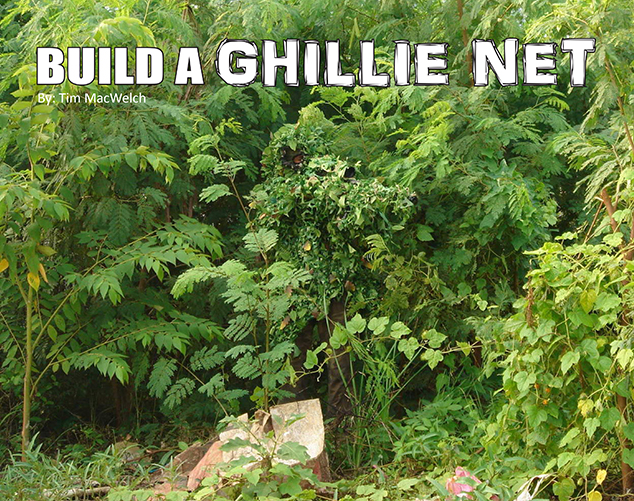
Favored by military snipers and well-equipped hunters, the shaggy ghillie suit is a familiar fixture in the modern art of camouflage. Less familiar is the backstory of this historic garb and the versatility of a blanket-like piece of ghillie inspired material. When it comes to the skill of concealment, the ghillie net should to be in every prepper’s toolkit.
Let’s start with the odd word “ghillie”. It’s an old Scottish word, typically meaning both “servant” and “protector”. The name was once applied to a special type of game warden. These historic ghillies were retainers on their Lord’s lands, responsible for protecting and managing the wild animals. Occasionally, these game wardens would also be tasked with capturing live animals and bringing them back to the castle courtyard for the Lord to shoot.
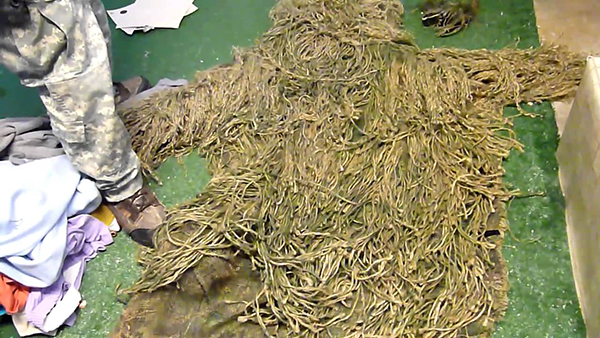
In order to hide from wary animals and dangerous poachers, the ghillies would conceal themselves under the naturally dyed patterns of their hunting kilts. The irregular plaid patterns of green, yellow, brown, and black yarn were woven into a kilt material. This allowed the garment to seamlessly blend into the colors of the native vegetation. These ancient hunting kilts are likely to be the world’s first intentionally patterned camouflage fabric.
Jump forward many years, versions of the ghillie camouflage concept were used by British troops for reconnaissance in the Second Boer War, World War I, and World War II. Even more “modern” interpretations of ghillie garb can be seen as jumpsuits that have a padded belly for lying prone. There’s usually net backing covered with shredded burlap and other frayed materials plus local vegetation. This provides for a more precise match of camouflage colors, shapes, and textures.
Grab A Net
So what’s the practical difference between the ghillie suit and ghillie net? The purpose built suit is meant to be a garment for one person. The net can be wrapped around one person, two people, or it can be used to cover objects. The full body suit takes some time to create, while the net is much quicker to build and much more versatile.
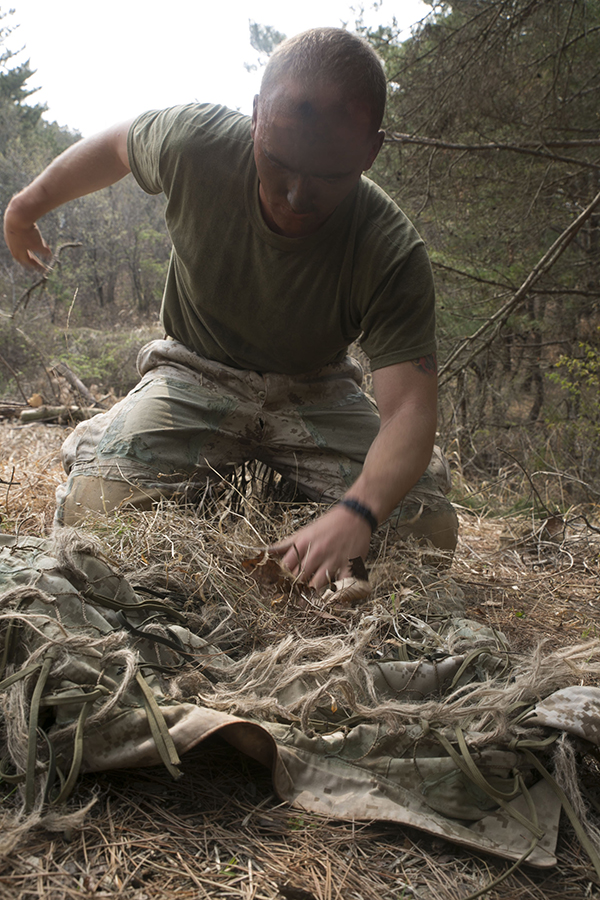
Get started by locating a decent quality net. In an area with commercial fishing activities, you may be able to pick up free net scraps. If not, visit your local craft store. Many chain craft stores sell “decorative” fishing nets. Even small ones are usually big enough for a decent ghillie net. These are often green, earth tone, or dark colored, and they’re usually cheap. If all else fails, you can weave your own net from thin cordage. Whether made or bought, the net should be large enough for your needs. Four feet tall and four to six feet wide is a good size for people and small objects.
Make Your Strips
If you’re grabbing a fish net at the craft store, grab some burlap fabric as well. The natural undyed khaki color is a good match for many environments. Your local store may have burlap in other color choices too. You can also grab some fabric dye or spray paint to make your own colored cloth. Purchase several yards of burlap fabric for the average ghillie net.
When you’re ready to build your net, cut the burlap into one foot strips that are 2-3 inches wide. Fabric other than burlap can be useful too. For example, you can add some strips of a white cloth throughout the net for use in snowy climates.
Collect Some Natural Materials
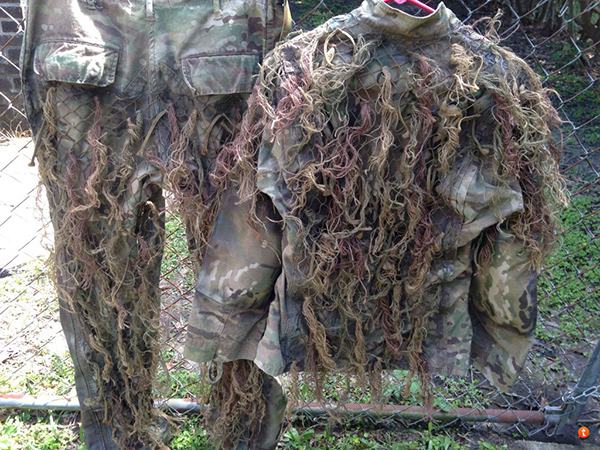
Shredded and shaggy burlap strips offer a great camo look to your ghillie net, but they aren’t the only material you can use. I’m a big fan of using soft flexible inner bark fiber from dead tree trunks and branches. Species like paw paw, sagebrush, tulip poplar, cedar, and many others can be used instead or in addition to the burlap strips. If your net will be used in grassy areas, you can also add some store-bought brush type raffia material. It’s durable and looks just like blades of dead grass.
I’ve also seen great effects achieved by adding sturdy dead leaves to the net. Collect oak and other tough leaves in the fall or winter before they decay. Use strong dark thread to tie them into the net by the stem. Keep some thread with the net to add things you find in the field. For example, I like to tie in colorful autumn leaves to make the net a perfect match in the fall.
Tie The Knot
With your burlap cut into strips and your natural materials gathered, you can start tying them into the net every couple of inches in every direction. Use an overhand knot to attach the end of each strip to the net. With the burlap or bark strips tied in place, the edges of the strips can then be picked apart and shredded for an even fuzzier appearance. If attaching leaves, use strong dark synthetic thread to tie the stem of each leaf to the net. If attaching raffia, tie it at the end or in the middle to match the length of the local grass blades.
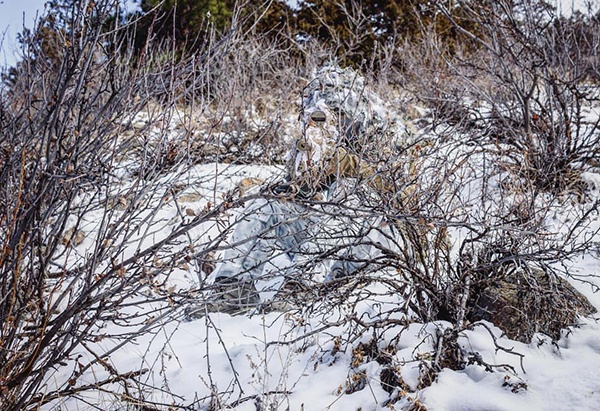
This is probably obvious advice but you only need to attach your materials to one side of the net since the other side will be hidden. Unless, of course, you want to make a two-sided net with a different camo pattern on each side. You could also tie some string onto the side of the net so it can be cinched together and worn like a cloak. Sew in a zippered pouch so your net has a gear pocket which is a great place to keep your thread and a little survival gear.
Put The Net To Use
Sometimes, the best defense is not a good offense but being invisible instead. Becoming undetectable is easier than you might think thanks to a carefully color-matched ghillie net. Wrap the completed ghillie net around your head and shoulders for stalking or fling it over your bugout bag if you have to step away from it. Make sure you have a landmark so you can find your bag again. You can also join two nets together to make larger camo panels. If you really want to see some magic, the net is most effective as a cover for someone lying prone. If you can lie in a low spot like a ditch and keep your heels down by turning your feet out, the ghillie net is as good as a cloak of invisibility.
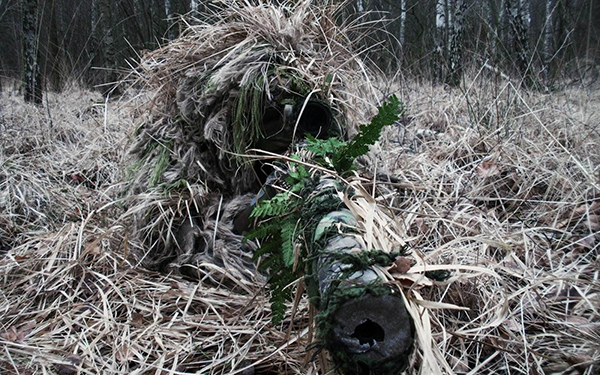
I’ll give you just one example from a camouflage class held a few years back. Before the class, I flattened myself out on the ground in a low spot right next to our lecture area and covered myself with a well-built ghillie net. My co-instructor told his nephew to find me and pointed to my exact hiding spot. Incredulously the lad said “there’s nobody there!” and he kicked hard at the form he perceived to be a shallow pile of leaves. To our mutual surprise, he kicked me in the top of my head as I lay there. I leapt up with a loud yelp and the boy nearly peed himself as a leafy specter rose out of the ground.
I have worn many types and patterns of camouflage over the years for hunting purposes, during preparedness classes, and just to test them. It’s hard to explain just how well these nets work. The patchwork pattern provides a great array of camouflaged colors, textures, patterns, shapes, and blurred edges. It covers just about everything you would want in a camouflage system.
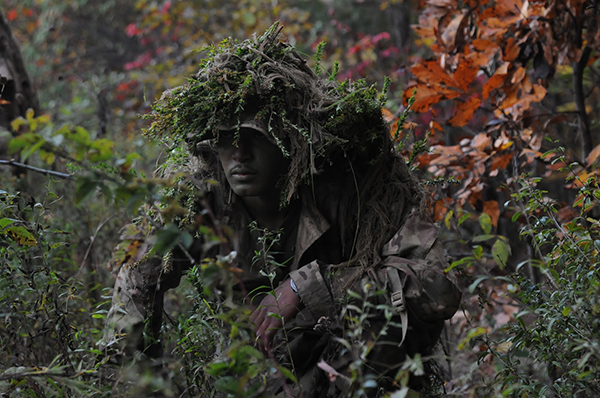
As a final thought, use good stalking and camouflage practices to take full advantage of your ghillie net. Match your net colors and textures as closely as possible to blend into the area. Watch your overall shape and silhouette by taking non-human forms under the net and staying low. For example, keep your legs together when standing and don’t stand when you can squat or lie down. Stay small and hide in an out-of-the-way spot if possible. Here’s an extra tip, if you’re sitting still do your best to stay still even when bugs are biting or there’s an itch.
